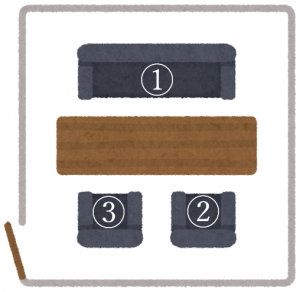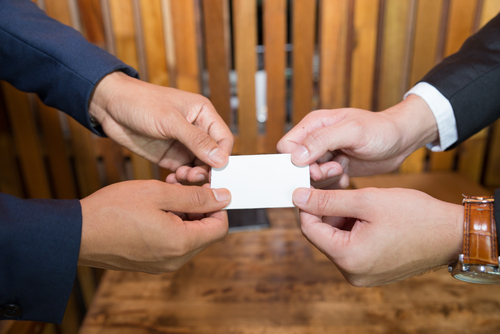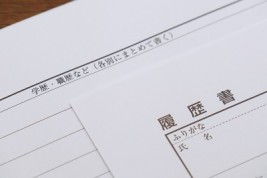Japan is known throughout the world as a country with a unique culture and style such as sitting on the floor (Seiza) or eating holding tableware and bringing it closer to their mouth. This unique style is not only reflected in their personal lives, but also the Japanese business world.
In this article, we would like to introduce some of the Unique Japanese Business Etiquette that cannot be learned in language schools and other schools for foreigners who are planning to work in Japan or are currently working in Japanese companies.
Unique Japanese Business Manners
Exchange of Business Cards
In the U.S. and other countries, business cards are just contact information cards, but in Japan, it is used as a substitute for greetings. There are some things you should pay attention to when you exchange business cards because there is an old belief in Japan that a business card is the same as a person’s face.
When to Exchange Business Cards?
In Japan, when you meet someone for the first time, you must exchange business cards when you start working with them. This will be the first impression you get when doing business in Japan, so why not practice the following steps to help you get started?
Procedure for exchanging business cards
We’d like to give you a brief introduction to the process of exchanging business cards in Japan.
-
- Take a business cards from the business card case.
The first person you need to exchange business cards with in any situation is the boss or superior you are visiting. Before exchanging business cards, you should take out enough cards for each person you are giving them to and place them underneath the card case. You should place your hand on your chest when exchanging cards.
-
- The inferior one in the business (Meshita) had to start the exchanging of the business card.
When you exchange business cards in Japan, the basic rule is that the inferior person who is visiting should give their card first. The word “inferior” here does not refer to the skills, age or the position of the person, but to the person who offers a business idea. For example, if a salesperson is proposing a product to a company that has been approved for a visit, the salesperson must show his or her business card first. Be careful not to get this procedure wrong, as it is rude to the other party.
-
- Give the name of the Company and your Name.
When exchanging business cards, instead of offering your business card silently, make eye contact with the person you are giving it to and say, “My name is XX and I work for XX company.
Some foreign names are difficult for Japanese people to understand, so try to say your name slowly and clearly using the katakana pronunciation.
-
- Receive the business card with both hands.
When accepting a business card, say “Thank you” (Choudai-Itashimasu) and accept it with both hands. When you receive the card, be careful not to block the part of the card where the other person’s name and company name are written with your fingers. If you do not know how to read the person’s name, ask the person when you receive the card.
-
- During business negotiations, put the business card you received on the left front.
Place the other party’s superior’s business card on your card case and arrange them in order of seating position close to your left hand (if you are right-handed).
Place the card case in the opposite direction of your dominant hand to prevent it from being dropped accidentally when you are taking notes (if your left-handed, place it close to your right hand).
A society where your seat depends on the company hierarchy
In the Japanese business world, you must pay attention to your superiors when you are in a business meeting or a meal. Not just wording, you also need to pay attention to where you sit. Although the above business card exchange manner is well known abroad, the seating arrangement we are about to explain is not so well known in other countries, but it is a business etiquette that has existed in the Japanese business scene for a long time.

The order of seating is ① > ② > ③, in order of high hierarchy.
As shown in ① above, the seat farthest from the entrance is called “kamiza”. The seat closest to the entrance is called the “shimoza”; in the above diagram, “shimoza” is ③.
The Origin of Kamiza & Shimoza
In the Japanese business world, it is common practice to recommend the “kamiza” to customers and superiors.
The origin of these words was in ancient times (Muromachi Period 1336-1573) when Samurais still existed. To reduce the risk of the assassination of a nobleman or person of high status, they were to sit away from the entrance. Also, because of the large number of people coming and going out from big rooms, they started asking people of the higher status to sit farthest away from the entrance so that people of higher status would be more comfortable.
Even now, this crisis management mindset is still present, not only in meetings but also in taxis and elevators, where we ask our bosses and superiors to sit in a position where they can be safe or stand in a position where they can avoid injuries in a case of breakdown.
On-time = 5 minutes ago
In Japan, arriving on time is almost the same as being late for an appointment. Punctuality is taught from elementary school and is part of the Japanese culture. Therefore, it is important to arrive 5 to 10 minutes before the start of a business meeting. Before you leave for your destination, find out how to get there, and if you need to take a train, find out the departure time and transfer point in advance.
“First names” or “Last names”?
In foreign countries, people often introduce themselves by saying “I am XX” or “My name is XX”, starting with their first name. However, in Japan, when you are in a close relationship with someone, you often call them by their first name, so in Japanese business situations, you should basically call them by their last name with a “san” at the end, not their first name. If the person you are talking to is a customer, you should call them by their last name adding a “sama” at the end.
Conclusion
These days, this type of business etiquette is becoming less common in Japan, but it can still be found in various business situations in Japan.
However, if foreign employees can use Japanese business etiquette, they can show their colleagues and superiors that they have a positive attitude towards working at a Japanese company and can make a big difference to other employees who are not as well versed in this area.
There is no loss in learning the above-mentioned business etiquette, so why not learn it for your career growth?










